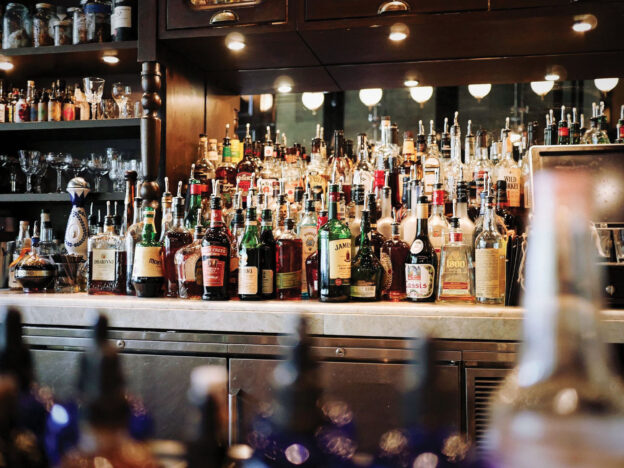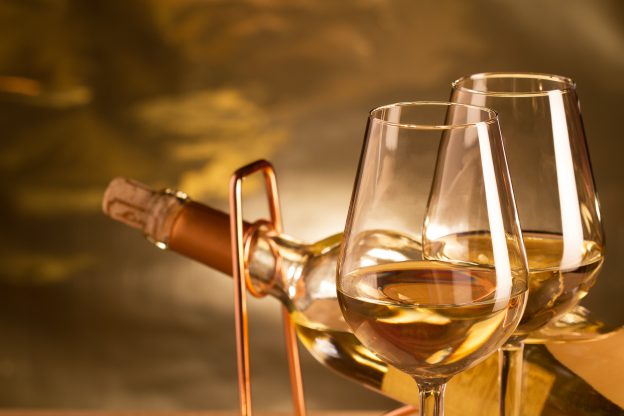Let’s say cheers to the ‘Pub capital’ and ‘Microbrewery capital ‘of India, Bengaluru. It is showing the way to the country that the pandemic should not upset social life with alcohol being an intrinsic part of social life. Consumption of alcohol is on the rise in Bengaluru and other parts of Karnataka and mind you there is considerable amount of ‘responsible drinking’ happening, with a few exceptions here and there.
The city which introduced pub, microbrewery and nightlife culture is slowly bouncing back, negotiating all the restrictions, ambiguous and unambiguous ones, placed by the government in its bid to check the spread of Covid-19. Though the bars and restaurants are tottering their way back into business, the end-consumer has found ways to keep the spirit going. This is good for the business. The end-consumer is infusing confidence in the liquor business as we witness increased liquor offtake.
Beer and IML offtake up
Consumption of beer has gone up by 38.98 % and Indian Made Liquor (IML) by 31.54% in the first five months of 2021, compared to the corresponding period in 2020 and the Karnataka Excise Department is laughing all the way to the bank. Liquor has been a money spinner for many governments and Karnataka is among the leading states to register good excise revenue. These are the first signs of recovery of the industry which like almost all other sectors was battered by the pandemic.
Karnataka hoping to touch `25,000 in Excise Revenues
Between April and August of 2021, Karnataka had sales of 87.56 lakh cartons of beer, up from 63 lakh cartons of beer in 2020. The trend was similar with regard to IML – 2.61 crore cartons in 2021, up from 1.98 crore cartons last year. Thanks to the end-consumer, the Karnataka Excise Department was able to cross the `10,000 crore revenue mark for the 5 months’ period, an increase from `7,755 crores during the corresponding period in 2020. In these five months, the Department has already registered 41.49% of its annual target and is hoping to surpass the target of `24,580 by the end of the financial year. In 2020, the Department had earned `23,332 crores, getting past the target of `22,700 crores.
Home-drinking gives a push
Thanks to the end-consumers, who quickly adapted themselves to the pandemic situation, and found ways to get their supplies and to drink at home. The Covid-19 pandemic and its associated government measures to limit mobility impacted patterns and places of alcohol consumption. Home became central for survival, for hope, for businesses to have some continuity. Work from home; online shopping; online classes; drink at home; work-out at home and the like have become the new normal, even as businesses are slowly opening up, depending upon what restrictions each State Government keeps announcing on a frequent basis. Remember Lockdown 3.0 last year and when liquor shops reopened? It was crazy queues, not just in Bengaluru, but across the country. The Karnataka Excise Department recorded liquor sales of `45 crores on the first day of reopening, even before the shutters were pulled down at 7 pm. Around 3.9 lakh litres of beer and 8.5 lakh litres of IML was sold on just one day. And one store – Tonique which boasts to be Asia’s largest liquor boutique, made a whopping business of `4 crores on its first day of reopening.
Seek lifting of restrictions
Bengaluru has become a highly vibrant city in the recent past and restaurant and bars are open till 1 a.m, though at the time of writing all restaurants, bars, clubs and wine stores have to close by 9.30 p.m. The Bengaluru Hoteliers Association President, P.C.Rao who recently met the Chief Minister, Basavaraj Bommai tried to convince the government on lifting the ‘unscientific restrictions’. He asked ‘Does the virus come only at night or on weekends?’ Presently, the liquor business is driven by retail vends with night curfew in place and restrictions of seating in bars and restaurants. There is no online sale of liquor in Bengaluru, but people can buy at wine stores, in mega super markets which have a separate liquor outlet and boutique stores.
Mumbai doubles liquor revenue
It is not just Bengaluru or Karnataka which is witnessing growth in sales of liquor, it is happening across the country, though dampened by the pandemic. In Mumbai, liquor revenue doubled from `264.85 crores to `512 crores with the lockdown turning out to a blessing in disguise. The Excise Department here has set a target of `19,500 crores for 2021-2022.
Pune has the most drinkers
According to a 2020 survey by Statista, Pune topped all the cities with 39.02% people consuming alcohol, followed by Mumbai (37.87%), Lucknow (37.5%), Bhubaneswar (37.3%), Hyderabad (37.24%), Delhi (35.54%), Bengaluru (33.39%), Indore (33.33%), Jaipur (32.18%), Chandigarh (28.33%), Chennai (28.16%) and Kolkata (23.5%).
FY21 sees decline in IMFL sales
However, In FY 21, there has been a 12% decline in sales of Indian Made Foreign Liquor (IMFL) compared to FY20, according to the Confederation of Indian Alcoholic Beverage Companies (CIABC). For the entire fiscal year, the total sales of IMFL was 305 million cases of nine litres each.
Positive trend in third and fourth quarters expected
The Confederation Director General Vinod Giri said that many states have showed a positive trend through the quarters and added that strong performance in the third and fourth quarters of FY21 ‘reflects the fundamental strength’ in the business. “It also confirms that there is no lasting shift against alcoholic beverages in consumption baskets.” The Confederation listed five states that helped recovery in liquor sales – Maharashtra, Goa, Haryana, Himachal Pradesh and Uttarakhand. Some states such as West Bengal, Rajasthan and Chhattisgarh witnessed large decline in sales compared to the previous financial year. There is some interesting statistics when it comes to West Bengal. According to economic research agency ICRIER and law consulting firm PLR Chambers, West Bengal ranks second after Uttar Pradesh in terms of absolute number of people who consume alcohol – 1.4 crore. The five southern states of Andhra Pradesh, Karnataka, Telangana, Tamil Nadu and Kerala together consume as much as 45% of all liquor sold in the country.
Big players bet on recovery in fiscal 2022
Carlsberg’s global chief executive Cees’t Hart said, “Our business had another very volatile year with frequent changes in restrictions. In Asia, the situation is uncertain in a number of markets such as Laos, Vietnam, Cambodia, India and also Malaysia due to the low level of vaccinations. In India, it’s a bit better. Infection rates are in decline. And there we see the off-trade more or less open to 90-95% and 70% in on-trade.” Beer sales in India grew in double digits in the quarter to June compared to the year-ago figure, but were still nearly half the sales in the pre-Covid corresponding period of 2019. However, Carlsberg’s India business grew 40% year-on-year in the quarter ended June. Similarly, Pernod Ricard, the world’s second largest distiller after Diageo, said it expects some recovery in India in fiscal year 2022. “For this year, we expect a gradual recovery. India was up 9% and was very resilient given the environment, while the underlying consumer-driven trends are clearly there,” said the Chairman of Pernod Ricard, Alexandre Ricard. The ICRIER report shows promise with India among the fastest growing markets for alcoholic beverages globally, with an estimated market size of USD52.5 billion in 2020. The market is expected to grow at a CAGR of 6.8% between 2020 and 2023. This indeed is music to the ears and we would like to hear from companies on how they are promoting ‘responsible drinking’.




 d Japan, the category’s two largest markets. In Japan, most RTDs are locally made and almost exclusive to Japan. Their popularity is partly due to the fact that they are relatively dry, which makes them more food-friendly and sessionable. In the US, the popularity of alcohol seltzers has been a tremendous engine for growth in the RTD market. In the cider category, as investment levels in those products continue to rise, almost 270m cases are expected by 2023, a 2.0% CAGR 2018-2023. Both of those categories (mixed drinks and cider) are taking share from beer as perceived accessibility increases (less bitter, easier to drink).
d Japan, the category’s two largest markets. In Japan, most RTDs are locally made and almost exclusive to Japan. Their popularity is partly due to the fact that they are relatively dry, which makes them more food-friendly and sessionable. In the US, the popularity of alcohol seltzers has been a tremendous engine for growth in the RTD market. In the cider category, as investment levels in those products continue to rise, almost 270m cases are expected by 2023, a 2.0% CAGR 2018-2023. Both of those categories (mixed drinks and cider) are taking share from beer as perceived accessibility increases (less bitter, easier to drink).